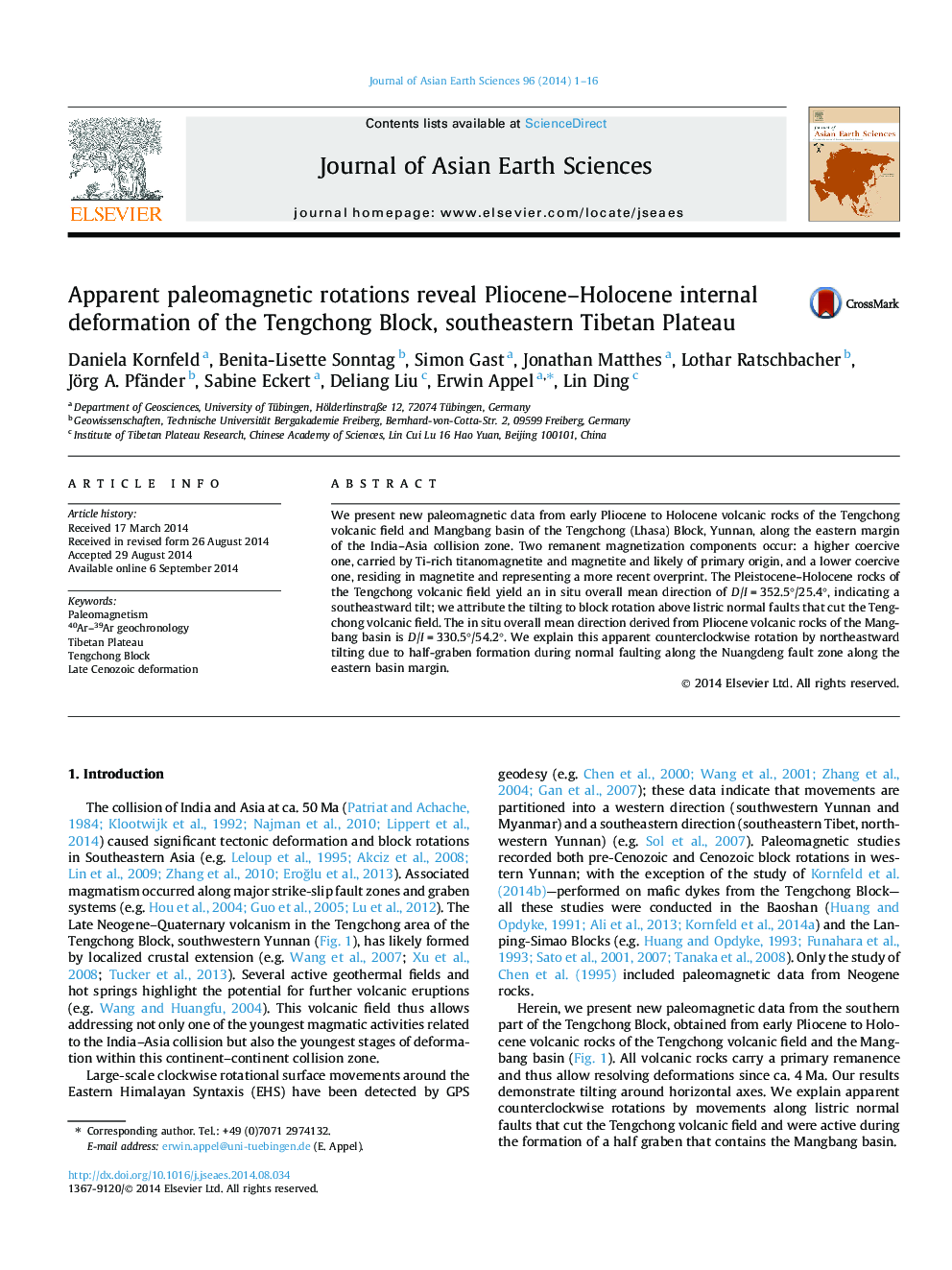| Article ID | Journal | Published Year | Pages | File Type |
|---|---|---|---|---|
| 6444288 | Journal of Asian Earth Sciences | 2014 | 16 Pages |
Abstract
We present new paleomagnetic data from early Pliocene to Holocene volcanic rocks of the Tengchong volcanic field and Mangbang basin of the Tengchong (Lhasa) Block, Yunnan, along the eastern margin of the India-Asia collision zone. Two remanent magnetization components occur: a higher coercive one, carried by Ti-rich titanomagnetite and magnetite and likely of primary origin, and a lower coercive one, residing in magnetite and representing a more recent overprint. The Pleistocene-Holocene rocks of the Tengchong volcanic field yield an in situ overall mean direction of D/I = 352.5°/25.4°, indicating a southeastward tilt; we attribute the tilting to block rotation above listric normal faults that cut the Tengchong volcanic field. The in situ overall mean direction derived from Pliocene volcanic rocks of the Mangbang basin is D/I = 330.5°/54.2°. We explain this apparent counterclockwise rotation by northeastward tilting due to half-graben formation during normal faulting along the Nuangdeng fault zone along the eastern basin margin.
Related Topics
Physical Sciences and Engineering
Earth and Planetary Sciences
Geology
Authors
Daniela Kornfeld, Benita-Lisette Sonntag, Simon Gast, Jonathan Matthes, Lothar Ratschbacher, Jörg A. Pfänder, Sabine Eckert, Deliang Liu, Erwin Appel, Lin Ding,
